There are recipes that touch your soul, and then there’s the Chashu Bowl – a Japanese culinary delight that dances on your palate with every bite. Diving deep into its rich layers of flavor, the tender pork belly combined with a bed of rice offers a gastronomic experience that’s beyond words. Join me as we journey through this incredible dish.
ke a delicious dish at home, consider preparing a chashu bowl using pre-cut chashu. You can easily make your own by slicing the pork cheek in your kitchen, freezing it, and allowing it to sit for a few hours before cooking it. You can also purchase meal kits that feature chashu and pork belly, and they’re delivered right to your door. You can cook them in less than ten minutes, so they’re convenient for busy mornings and late nights.
Chashu Bowl Recipes
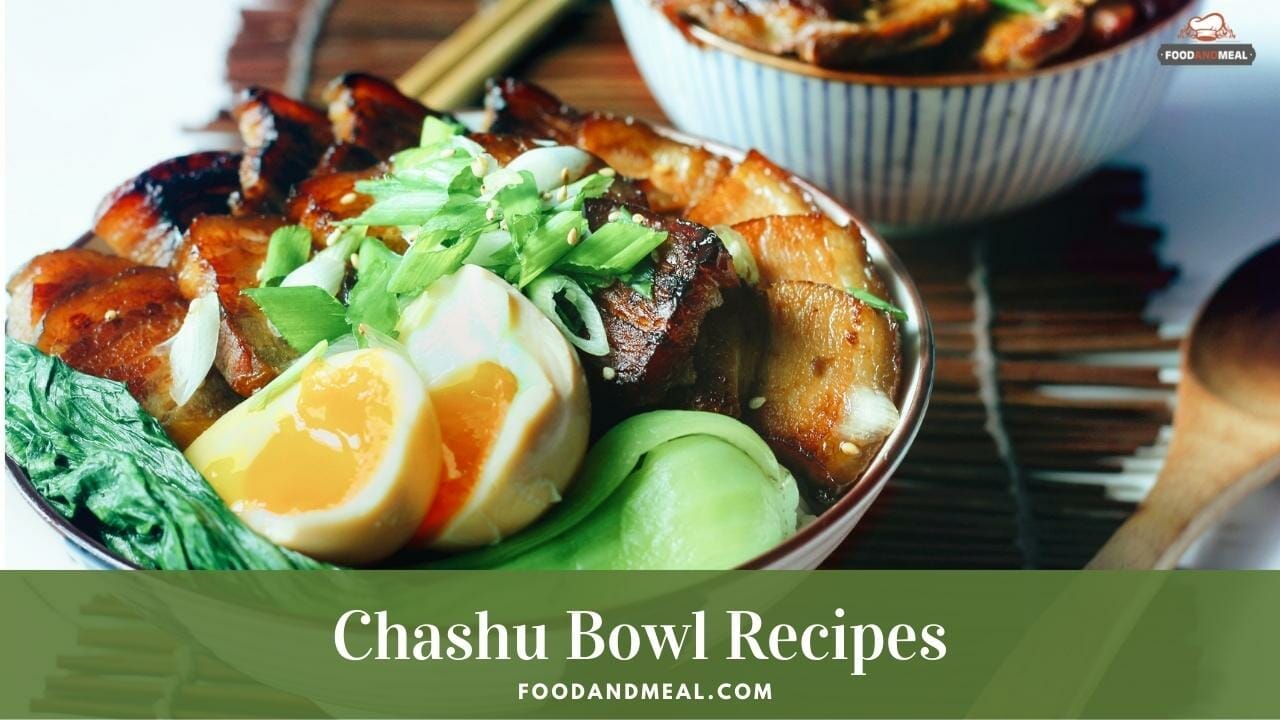

Chashu Bowl
Equipment
Ingredients
- 1 cup Japanese rice cooked
- 2 or 3 slices Pork Chashu or Chicken Chashu half diced and half left whole
- 1 tablespoon seasoning liquid from Pork Chashu or Chicken Chashu
- 1 scallion green part only, chopped
- 1 small nori sheet cut into thin strips
Instructions
- In a small serving bowl, mix the rice with the diced chashu and half of the chashu seasoning.
- Top with the remaining whole chashu, scallion, and nori.
- Drizzle the remaining chashu seasoning over the rice bowl.
Video
Notes
Nutrition
© Food And Meal
This website provides approximate nutrition information for convenience and as a courtesy only. Nutrition data is gathered primarily from the Spoonacular Database, whenever available, or otherwise other online calculators.
Pressure Cooker Method
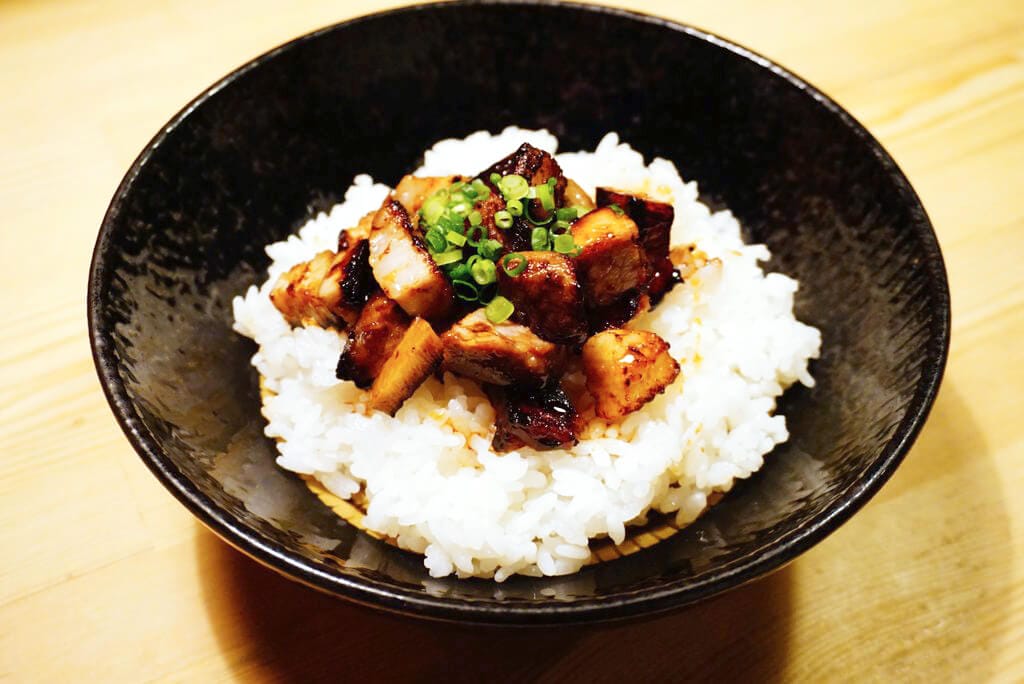
The beauty of culinary arts lies in the myriad of ways one can bring a dish to life. For our beloved Chashu Bowl, the pressure cooker promises to deliver both flavor and efficiency. Here’s how to capture the essence of this dish using a pressure cooker:
Ingredients:
- 500g pork belly
- 2 cups short-grain Japanese rice
- 3 cups water (for rice)
- 1/4 cup soy sauce
- 1/4 cup sake
- 3 tbsp sugar
- 4 garlic cloves, minced
- 1-inch ginger, sliced
- 2 green onions, roughly chopped
- Additional water for pressure cooking
Instructions:
- Prepping the Pork Belly: Begin by rolling the pork belly tightly and tying it securely with kitchen twine. This ensures even cooking and retains the shape.
- Searing: Heat the pressure cooker on the sauté setting. Once hot, add the pork belly and sear each side until it has a beautiful golden-brown hue. Remove and set aside.
- Pressure Cooking: a. In the same pot, pour in the soy sauce, sake, sugar, minced garlic, sliced ginger, and green onions. Stir until the sugar is dissolved. b. Place the seared pork belly into the mixture, and add enough water to almost cover the pork. c. Secure the lid of the pressure cooker. Cook on high pressure for 90 minutes. d. Once done, allow a natural pressure release for 20 minutes before manually releasing the remaining pressure.
- Rice Cooking: While the pork belly is being pressure cooked, rinse the short-grain Japanese rice under cold water until the water runs clear. Add the rice and 3 cups of water to the pressure cooker. Using the rice cooking setting, cook the rice as per your appliance’s instructions. Once done, let it sit for 10 minutes before fluffing.
- Serving: Slice the cooked pork belly into ½ inch thick pieces. Serve atop a bed of the sticky Japanese rice. Drizzle some of the cooking liquid from the pressure cooker over the pork belly slices for added flavor.
Tip: The pressure cooker’s environment intensifies flavors, ensuring your Chashu Bowl retains all its traditional richness in a fraction of the time. Pair it with pickled radish or some miso soup, and you have a delightful meal ready in no time!
By harnessing the power of pressure cooking, you can significantly cut down the cooking time without compromising on the authentic taste and tenderness of the Chashu Bowl. It’s a testament to the flexibility of culinary expertise, allowing both tradition and innovation to coexist beautifully on a plate.
Looking for efficiency in the kitchen? Discover the magic of modern cooking with our handpicked selection of the best pressure cookers on the market. From tender meats to perfectly cooked grains, redefine your culinary experience today. Dive in and explore the best options : https://foodandmeal.com/best-pressure-cookers-of-2023
Tip and Tricks
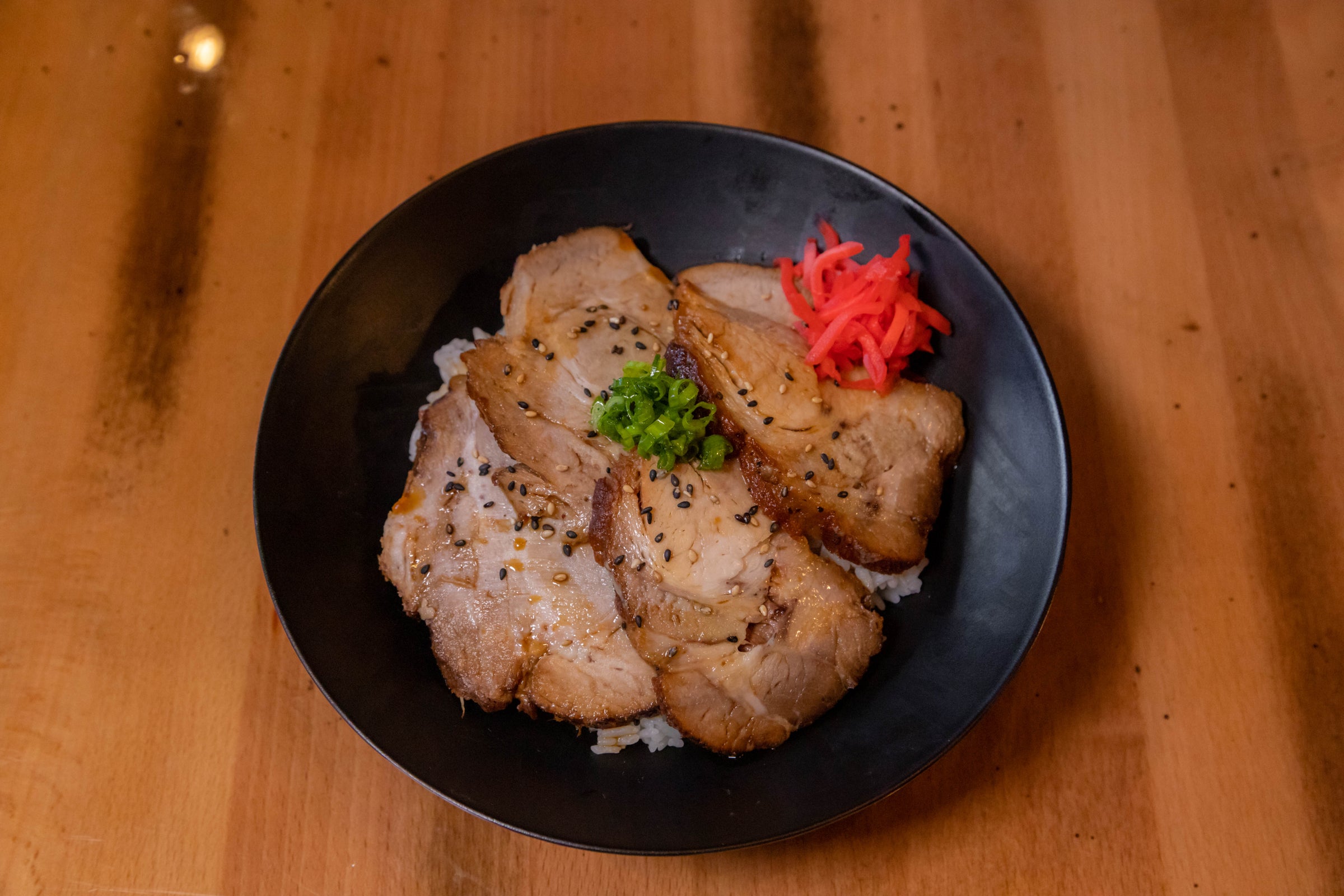
Serving Suggestions
The art of dining doesn’t just end with the main dish; it extends to its presentation and accompaniments, creating a wholesome experience. For our Chashu Bowl:
- Occasions and Audience: The rich, savory flavors of the Chashu Bowl make it a fantastic option for dinner parties and intimate family gatherings. The allure of Japanese cuisine resonates with many, making it a favorite among both adults and older children.
- Complementary Sides: Consider pairing this dish with a light miso soup or a delicate salad like sunomono (Japanese cucumber salad). These light accompaniments balance the richness of the pork belly beautifully.
- Garnishes: Enhance the visual appeal and flavors by sprinkling finely chopped green onions or a little pickled ginger on top. A sprinkle of sesame seeds can add a delightful crunch.
- Beverage Pairing: The hearty flavors of the Chashu Bowl go well with traditional Japanese drinks like sake or green tea. For those looking for non-alcoholic options, a barley tea or a gentle jasmine tea pairs wonderfully.
- Serving Styles: While traditionally served in a bowl, you can also consider placing the pork belly atop a bed of rice on a plate for a more spread-out presentation. This allows your guests to appreciate the beauty of the rolled pork belly slices even more.
Cooking Tips
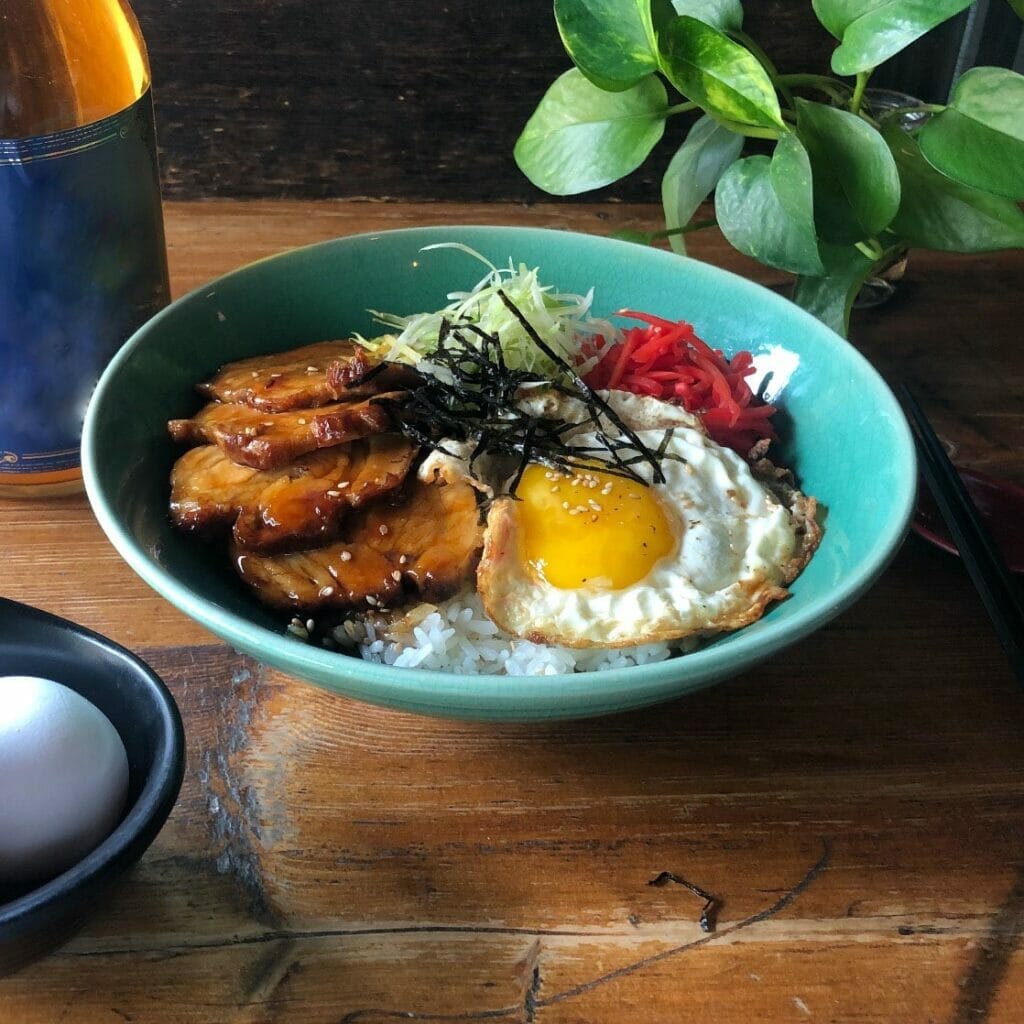
Achieving the perfect Chashu Bowl isn’t just about following the recipe; it’s also about mastering the subtleties of the process:
- Quality Matters: Always prioritize the quality of your pork belly. The tenderness and flavor are greatly influenced by this choice.
- Watch the Sugar: When preparing the sauce, ensure the sugar dissolves completely to prevent a gritty texture.
- Avoid Overcooking: Pressure cookers are fantastic for speeding up the cooking process, but keep an eye on the time to ensure the pork belly remains succulent and doesn’t become too soft.
- Mistake to Avoid: One common mistake is not tying the pork belly securely. Loose ties can cause uneven cooking and result in some parts becoming overcooked.
- Rice Consistency: The key to the perfect bowl lies in the rice. Rinse until water is clear, ensuring that the cooked rice is sticky and moist, not mushy.
List of 5 FAQs
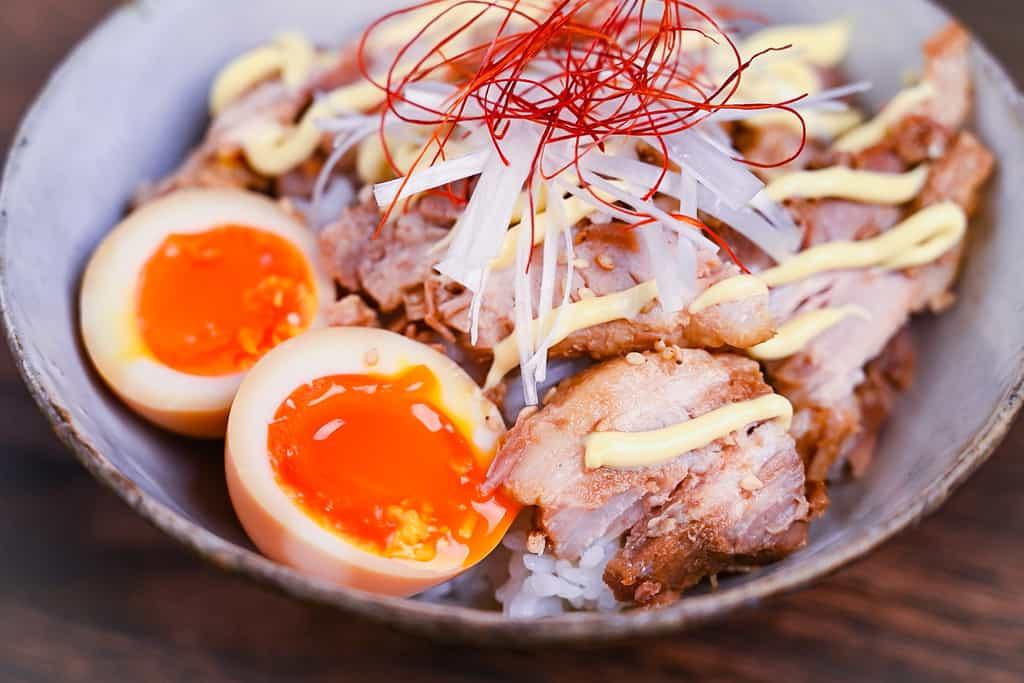
- 1. Can I use a different cut of pork if I don’t have pork belly? While pork belly offers a distinct flavor and texture due to its fat content, you can substitute it with pork shoulder for a leaner option. The result will be less fatty, but still delicious.
- 2. How do I store leftover Chashu Bowl? Cool the leftovers to room temperature, then store them in an airtight container. They can be refrigerated for up to 3 days. Reheat using a microwave or on a stovetop, ensuring the pork is heated thoroughly.
- 3. Can the Chashu Bowl be frozen for later use? Absolutely! Once cooled, place the pork slices in a freezer-safe bag, pushing out as much air as possible. It can be frozen for up to a month. Thaw in the refrigerator overnight before reheating.
- 4. What if I don’t have sake for the recipe? While sake offers a distinct flavor, in its absence, you can substitute it with dry sherry or Chinese rice wine.
- 5. Is there a vegetarian alternative to the Chashu Bowl? Yes, for a vegetarian version, you can use firm tofu or tempeh as a substitute for pork belly. Adjust cooking times accordingly and ensure the flavors are well-absorbed.
Embracing the rich heritage of Japanese culinary wonders, the Chashu Bowl is a testament to the magical blend of tradition and flavors. As the tender pork belly melts in your mouth and mingles with the sticky rice, you’ll be transported straight to the heart of Japan. Impressed? You’re not alone. If this recipe added a touch of authenticity to your dining table, spread the joy and share this recipe with your loved ones. For more such culinary gems, don’t forget to subscribe to our blog.
FoodAndMeal.Com
site is happy to accompany you on a tour of culinary cultures around the world. Feel free to ask us anything about the recipes because all your kind comments give us the chance to improve our site.
I'm James F Anderson, a noted sous chef from London and a Le Cordon Bleu alumnus. My career began in a Michelin-starred Parisian eatery, where my blend of classic and contemporary cooking, using seasonal ingredients, earned accolades. Recognized in culinary publications and on cooking shows, I’m committed to mentoring aspiring chefs and delivering memorable dining experiences, marking me as a standout talent in the culinary world.
